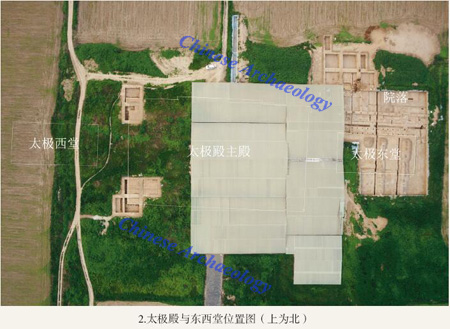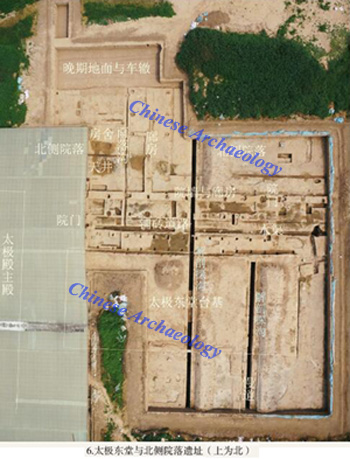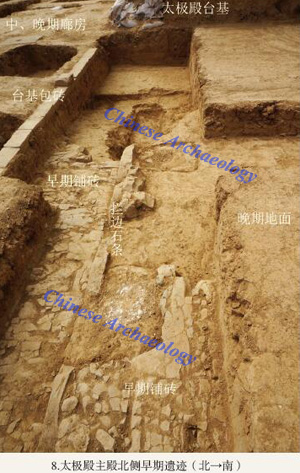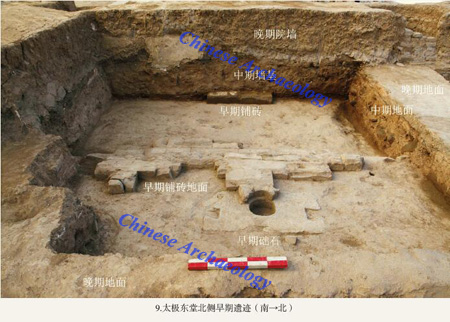The new discovery of Luoyang City’s Taiji Hall of imperial palace during Han and Wei Dynasties
From:Chinese Archaeology NetWriter:Date:2016-05-17
The Taiji Hall of ancient Luoyang City during Han and Wei Dynasty was main Hall of imperial palace during Wei Dynasty, which was the first Taiji Hall, playing a significant role in the history of ancient capital. Since the year of 2012, archaeological team of Han and Wei Dynasty’s Luoyang city from Institute of Archaeology, Chinese Academy of Social Sciences (IA CASS) conducted thorough investigation towards Taiji Hall Site, which figured out the scale, range, structure, conservation condition as well as chronological order.

Aerial photo which showed the central area of Luoyang City during Northern Wei Dynasty
Taiji Hall’s site located in the northwest to the middle part of the palace of North Wei Dynasty, 1 km to Village Jin, Pingle County, Mengjin Town, Henan Province from the site’s north, 460m to Changhe Gate, the front gate of the palace from south. During 1960s, Luoyang archaeological team of IA CASS did a thorough investigation to the city site, discovering large scale rammed-earth building, considering related materials brought forward the preliminary understanding that the site could be Taiji Hall, the main hall of North Wei Dynasty’s imperial palace. In 1983, Luoyang archaeological team of IA CASS dug up four trial trench around the rammed earth site, acquiring its range and conservation condition, reaffirmed that it could be the center main hall---Taiji hall.

Aerial photo of Taiji hall with Western and Eastern Hall
Through scientific archeological investigation, massive excavation and necessary partial anatomy, it was learned Taiji Hall’s site range, layout, distribution and chronological change comprehensively. Taiji Hall, imperial palace of Luoyang City of Han and Wei Dynasty was composed of the main hall in the center as well as the side hall on the east and west, and the three halls was on the same axis from east to west. The three halls reached 8000 square meter, together with winding corridor, wall, palace gate, etc. surrounding, which was a well-planned large Taiji hall architectural complex. The anatomy of rammed earth showed that Taiji hall was built in Cao’s reign period of Wei dynasty, and lasted till North Wei and North Zhou Period, with reparation and reconstruction.
As the main hall of the imperial palace, the Taiji hall was the place held important event, while the east and west hall was the place emperor listening to the policy, holding party and lecture, which was the politics’ centre. Taiji hall was the big event place, and the east and west halls were the daily event, called “East and West Hall System”, which was a significant political system during Wei and Jin Dynasties. The archeological discovery of Taiji Hall Site was the largest architectural complex in Luoyang City of Han and Wei Dynasties,even in ancient China. This well-designed, integrated-planned palace complex was a brand new design of ancient Chinese capital, which was also the direct reflection of political and cultural landscape.

Aerial photo which showed the Eastern Hall of Taiji with north part court

Early remains in the north part of main Taiji Hall

Early remains in the north part of Eastern Hall

